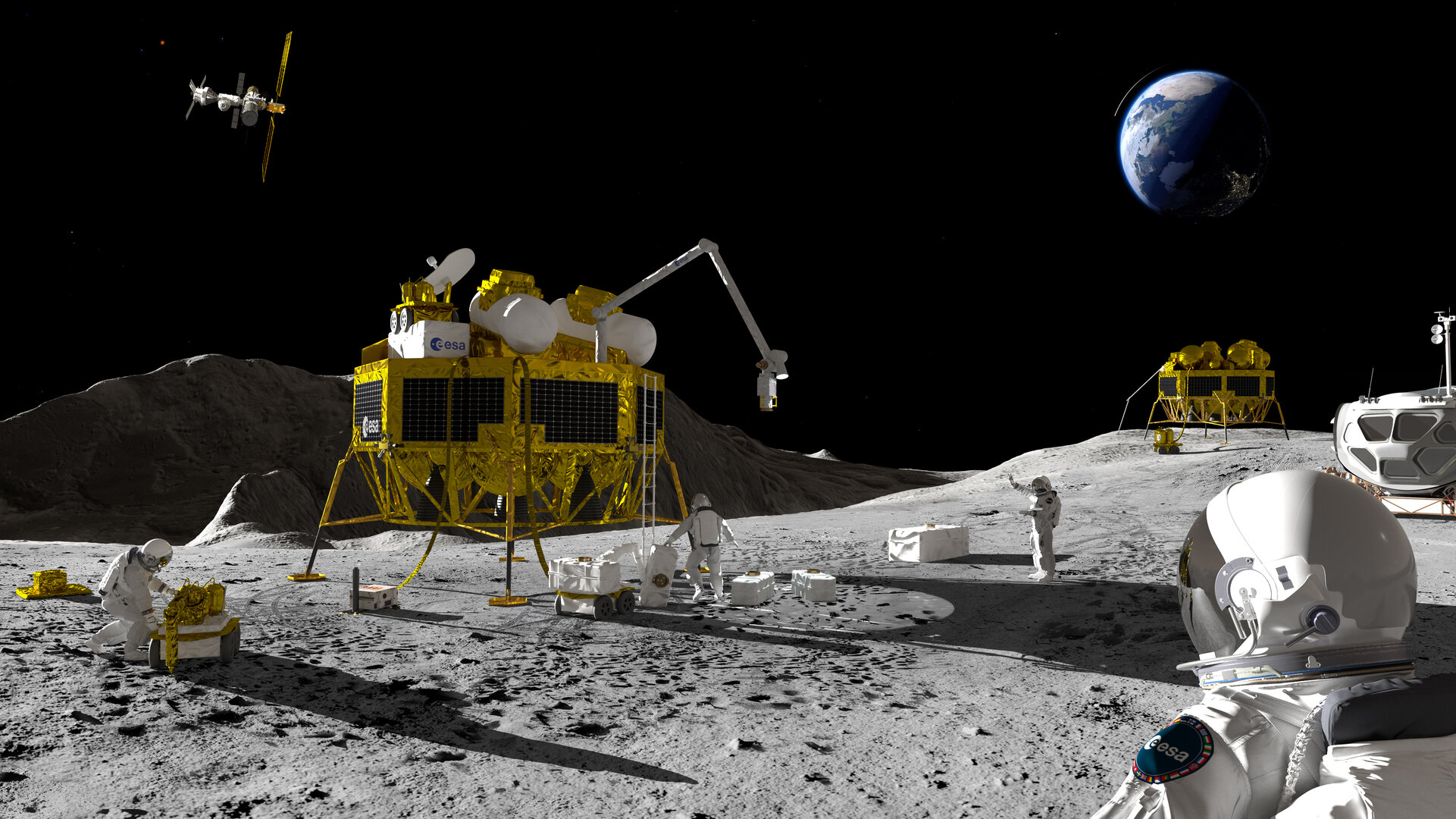Argonaut: Europe's lunar lander programme
The European Space Agency (ESA) lunar lander programme, Argonaut, represents Europe’s autonomous, versatile and reliable access to the Moon. From the 2030s, Argonaut landers will be launched on four-booster Ariane 6 rockets to deliver cargo to the Moon’s surface, supporting robotic and crewed missions.
Forward to the Moon

International space agencies are striving to reach the Moon and explore in a more sustainable way than during the Apollo era, with plans to live and work during the lunar night which lasts 14 days and can see temperatures plummet to a chilling -150°C.
Argonaut will be central to this effort, supporting NASA’s Artemis programme while providing Europe with independent access to the Moon. Each lander will deliver up to 1500 kg of cargo to the lunar surface, landing autonomously within an accuracy of 250 metres for the first flight and improved to an accuracy of 50 m for the third flight. The cargo can be varied, from vital resources for astronauts such as food, water and air, to rovers and science instruments, or technology demonstrations and infrastructures for working and living on the Moon, such as communication, power generation, and in-situ resource utilisation plants.

The first Argonaut mission to the Moon will be in 2030, with subsequent missions taking place every two to three years afterwards. With a designed five-year lifetime on the surface, Argonaut will support the international effort to establish a long-term human presence on the Moon, helping to develop the capabilities needed to live and work on the lunar surface.
Argonaut's architecture

The Argonaut spacecraft consists of two main components: the Lunar Descent Element (LDE) and the Passenger. The LDE is the Argonaut programme’s lunar lander, responsible for transporting and landing the Passenger (the mission-specific cargo) on the Moon.
Thales Alenia Space in Italy will lead the European consortium to build the LDE. Their core industrial team brings together expertise from across Europe, including Thales Alenia Space in France and the United Kingdom, OHB System in Germany, and Nammo in the United Kingdom.
First mission: Argonaut Mission 1

ESA will propose a first Argonaut mission for funding by its Member States at the Ministerial Council taking place on 26 and 27 November 2025. The proposed Argonaut Mission 1 would launch on a four-booster Ariane 6 rocket by the end of 2030 and demonstrate Europe's end-to-end capability of landing on the Moon's south polar region.
The mission would also bring European payloads to the lunar surface – these are still to be selected by decisions at the Ministerial Council but could include a surface robotic asset and the NovaMoon payload module.
The Argonaut patch

As Apollo and Artemis before it, the name Argonaut is inspired by Greek mythology, referencing the legendary explorers who sailed aboard the Argo in search of the Golden Fleece. The programme’s patch reflects this European heritage, depicting a white crescent Moon shaped like a ship and its sail, symbolising the journey to the lunar surface. A golden dot represents the lunar lander and the Golden Fleece, while the stars in the background represent the future possible missions Argonaut will launch. The ship’s reflection carries a hidden message of its destination in Morse code: “LUNA”.
Argonaut is a key step in ESA’s contribution to sustainable lunar exploration, ensuring that Europe remains an integral part of international efforts to explore the Moon.
A CAD model of a full Argonaut lander for illustration purposes is available here.
The passenger part of the model is generated by ESA, while the Lunar Descent Element (LDE) is inspired by the concept of the industrial prime contractor Thales Alenia Space in Turin, Italy.
Please consider mentioning ESA and Thales Alenia Space if any material is made using this CAD model.


